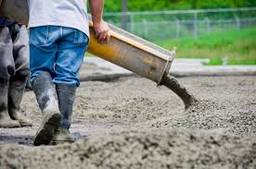A simple guide to raft foundations

What are raft Foundations
Raft foundations are positioned underneath buildings and are effective at lowering contact pressure. Raft foundations are also cheaper, easier to install and do not demand that your property be extensively excavated to lay foundations.
Raft foundations are composed of a hard core layer of rough gravel and stone of 150mm, followed by a 75mm layer of sand and finally a 200mm raft of concrete. Finally, a waterproof membrane and a layer of floor screed complete the foundation.
Raft foundations can also include steel reinforcements to decrease the chance of cracking. In addition to this, raft foundations can include thicker areas and beams for extra support.
This type of foundation is especially useful in situations where the ground is unstable or uneven or is vulnerable to movement, which is especially possible in areas where mining has taken place. Raft foundations evenly spread out the weight of a building over its entire surface area. This explains why raft building is effective in unstable ground scenarios as soil with a low bearing capacity can more effectively bear the load of a building that is evenly spread across its whole surface area.
Despite these benefits, raft foundations do have disadvantages. Raft foundations can be prone to soil erosion, especially when they are not treated properly. In addition to this, raft foundations are not very effective when they are being used to support buildings that have their weight focused on one area. However, homes and domestic buildings do not often have weight focused in a specific area, so families need not worry about this if they wish to make use of raft foundations to cut costs on a building.
